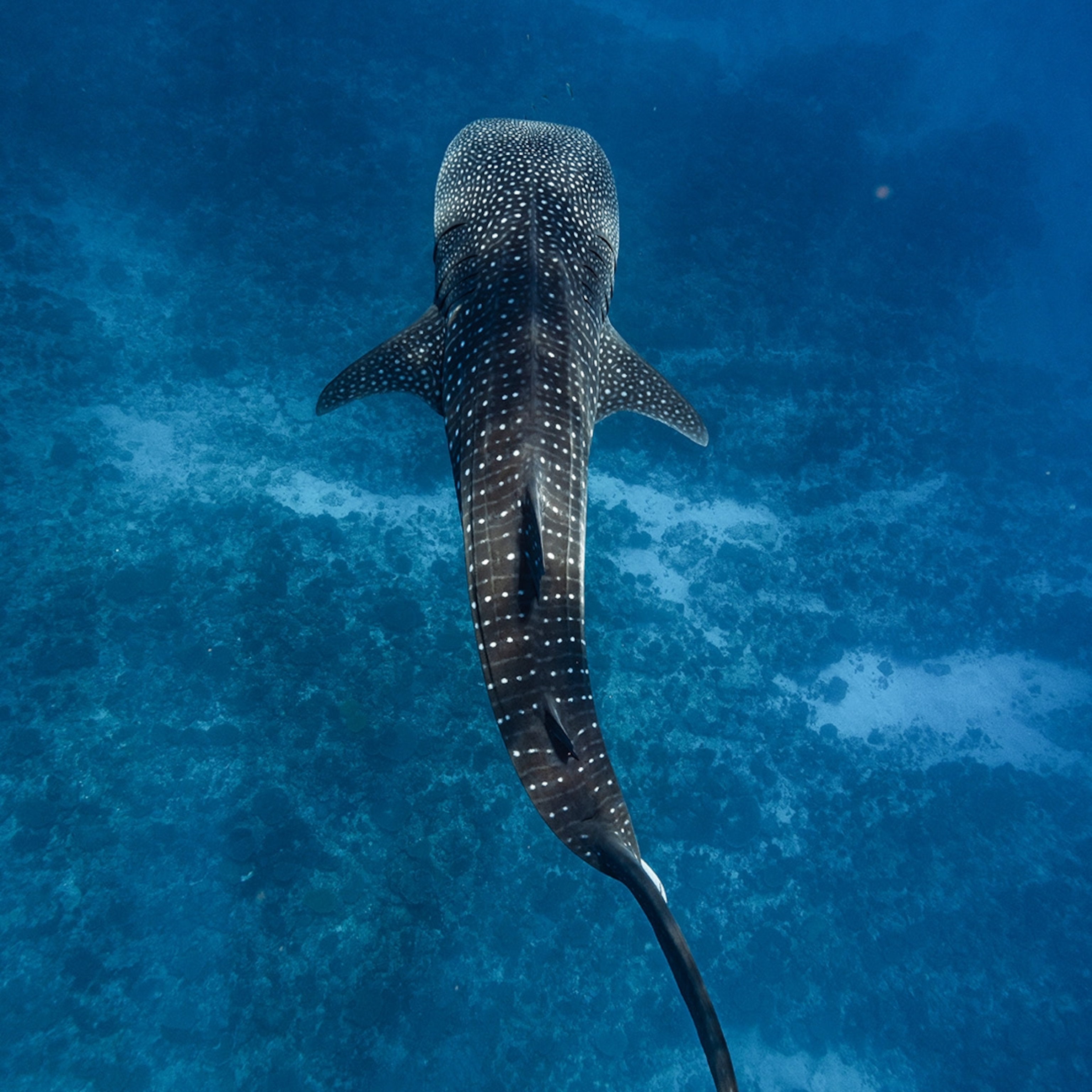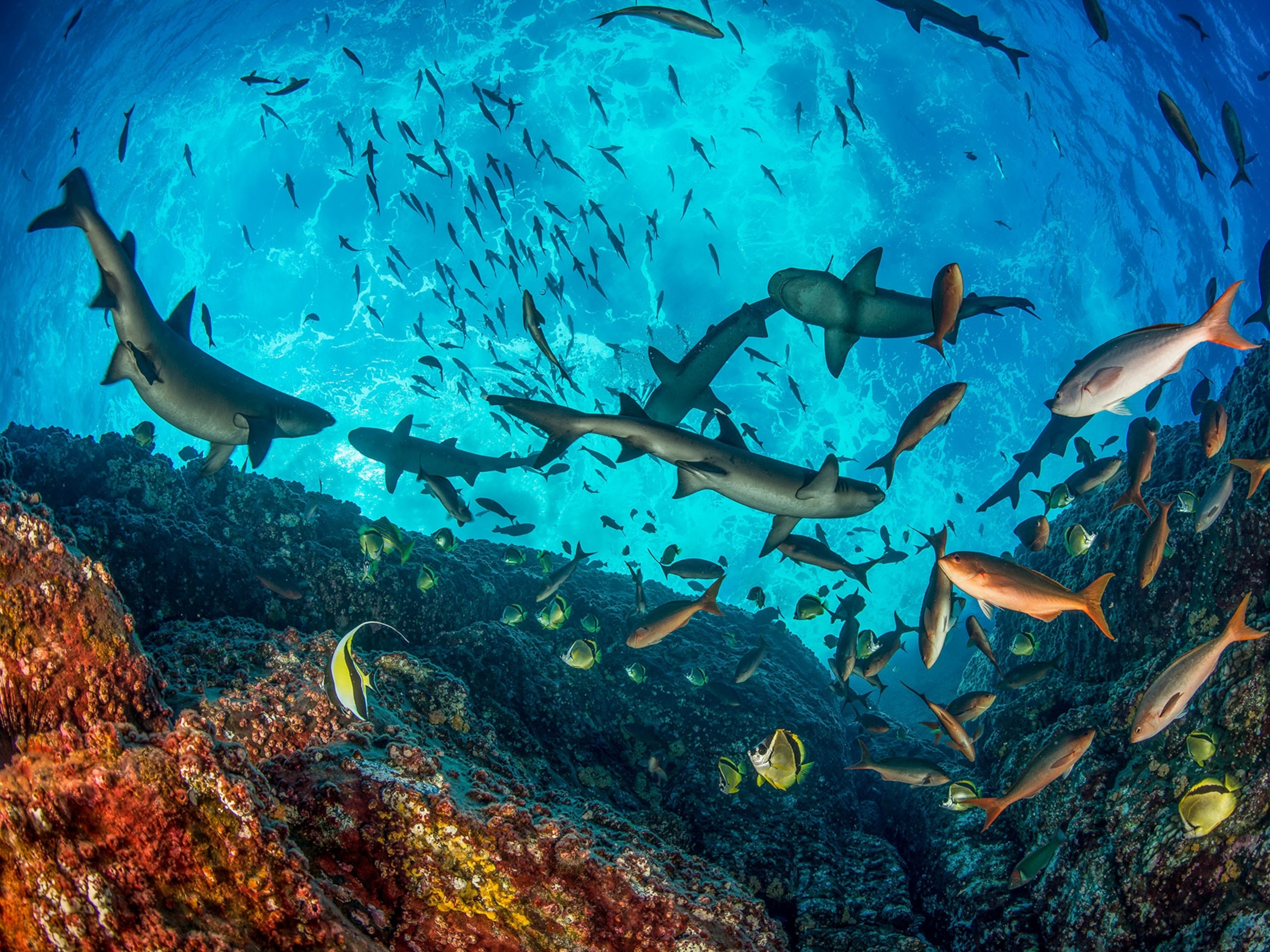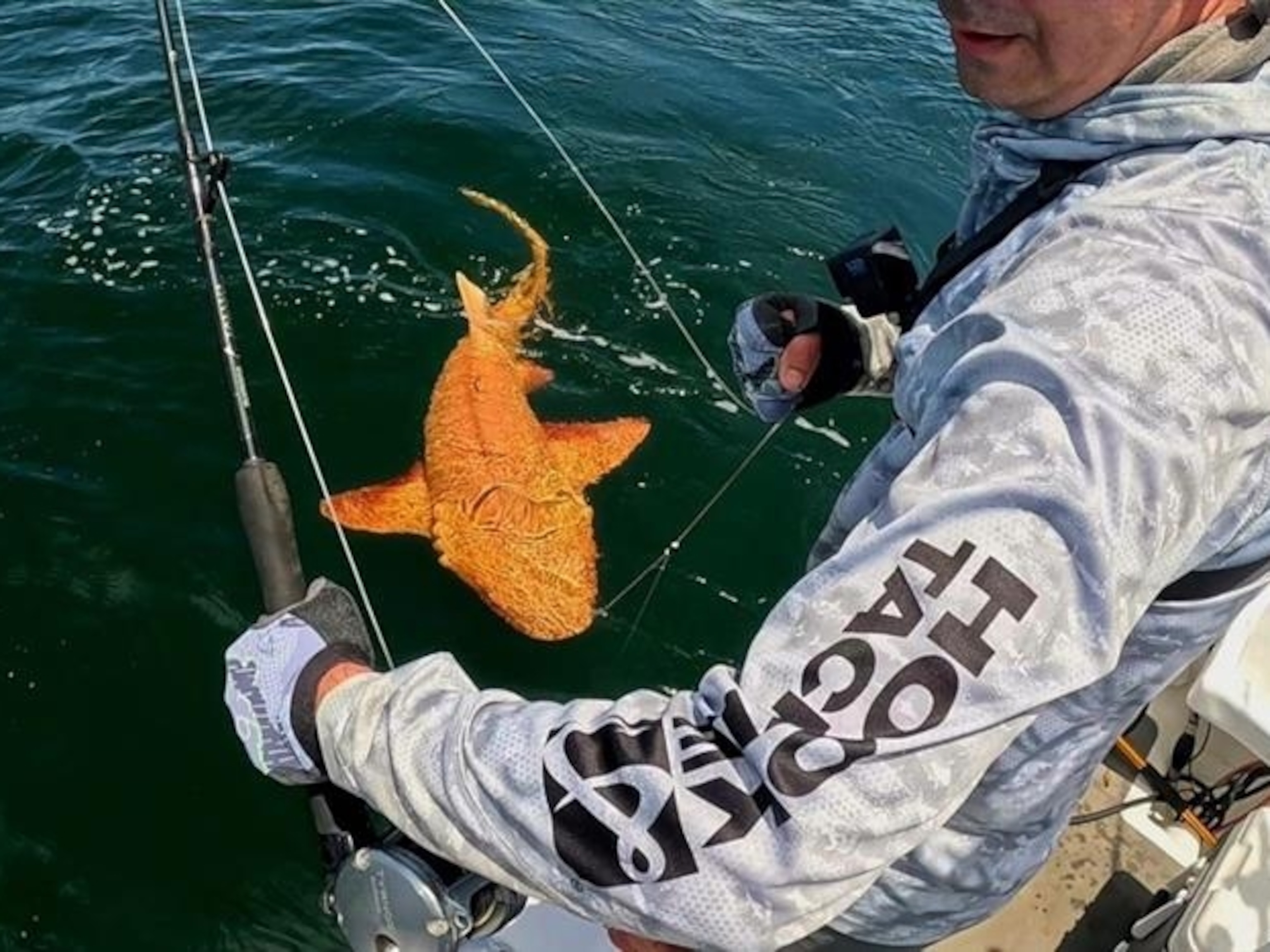
10 Tips for Sharing the Beach With Sharks
Shark-human interactions at one of the United States’ most popular summer destinations are on the rise. Here’s how to stay safe (and respect wildlife) at the beach.
On scenic Cape Cod, Massachusetts, a flourishing seal population has turned the outer beaches from Hamptons-esque tourist playgrounds into the new epicenter of great white shark research. So far this season, scientists have tagged four new sharks in the waters around Chatham, one of them just a few hundred feet off a popular beach. Last year, they identified 141 individual great whites in the area–101 of them for the first time. Chilling numbers, when one considers that in the past few years there have been two attacks in the area, and the animals are frequently spotted just feet from swimmers, boaters, and surfers. This constant close proximity can lead to people becoming complacent about the very real threat sharks present.
“I realized we are giving people a false sense of security,” Nate Sears, a natural resource manager for the town of Orleans, Massachusetts, told the Cape Cod Times. “People were thinking that if we’re not stopping people from going in the water, then it must be safe. Nothing could be further from the truth.”
Statistically speaking, your chance of being bitten by a shark is still extraordinarily low, and your risk of death from a shark is even less. You’re more likely to be one of the thousands of people around the world who are struck by lightning each year.
But sharks have been around for millions of years, despite our own species decimating as many as a quarter billion of them annually for the fin trade and sport—and they aren’t going away any time soon.
“It’s going to be a situation where we have coexistence,” Greg Skomal, a senior biologist with Massachusetts Marine Fisheries and the guru of all things Atlantic white shark, told me. He cautions that while attacks are on the rise, he doesn’t think it’s because the animals have developed a sudden taste for bipedal meat. “We know the sharks are not actively attacking or going after people, because we just aren’t having the interactions we would have if that were the case. But the shark could make a mistake. It’s a wild animal. So don’t put yourself in a position where you could increase the probability of an interaction.”
So what are the best practices to prevent the ocean-going, watersport-loving public from inadvertently becoming stars in a scene from Jaws? How does one best tempt not the fates? Here are some tips.
Don’t Look Like Shark Food
It’s common sense that if there are lots of sharks around and they’re feeding on seals, maybe don’t go getting up close and personal with the seals. Especially in a watercraft that resembles, from beneath, a seal. That means that if you want to shoot photos of all the cuddly critters, don’t do it on a stand-up paddleboard or kayak. Do it from land. According to the International Shark Attack File, a collaboration between the Florida Museum of Natural History and the American Elasmobranch Society, sharks also have a tendency to notice high contrast colors, such as the popular bright yellows and oranges and greens used by kayak manufacturers. If you live in a sharky region—and most coastal areas have some level of potential presence—they suggest you opt instead for matte colors or blues. They recommend the same caution be taken with swimsuits, shiny jewelry, and surfboards. It should come as no surprise that Mick Fanning now rides a blue and black board instead of a “yum-yum” yellow one.
Avoid Confusing Scenarios
No, not confusing for you. For sharks. Is it foggy? Raining? Is the light low, such as at dawn, dusk, or after dark? Is there sewage in the water? Are fishermen yanking in struggling, bleeding fish all around you? Is the water murky? Are you bleeding from anywhere in or on your body, even a little? These are all factors that could lead to a disoriented-yet-hungry, or just plain curious, shark doling out an exploratory bump or two, warns Florida Program for Shark Research director and coordinator George Burgess.
Be Chill
Burgess also advises against erratic splashing, which can trigger a shark’s sense of curiosity—meaning they may wonder if you’re telling them it’s dinnertime, and you’re the main course. Try to keep swimming strokes smooth, and act calmly in the water. Plus, sharks are hypersensitive to electromagnetic signals, meaning they can literally sense fear or excitement or your pounding heart, and have been known to react predatorily to such stimuli, as evidenced by these photos of free divers Carlos Estrabeau and Ocean Ramsey.
No Dogs Allowed
Their small size and wild splashing, coupled with the high frequency sounds they emit, may make our pets a potentially irresistible hors d’oeuvre for aquatic apex predators, and many places warn against letting Rover into the water in shark-infested territory. That said, “there is currently no reliable scientific information confirming whether swimming with a dog increases the risk of being bitten,” Dr. Charlie Huveenth, an ecologist with the South Australian Research and Development Institute’s Marine Ecosystems Science Program told the Sydney Morning Herald.
Use the Buddy System
According to Burgess, sharks most often attack lone individuals, so avoid the urge to go solo when you think sharks are nearby. Plus, if they do attack, you only have to be the least-slow swimmer in order to get away (just kidding).
Be Aware of Your Surroundings
Are there suddenly schools of baitfish going ballistic? Are seagulls freaking out overhead? Seals panicking and rushing for shore? Animals react to subtle changes in their environment that we humans can be deaf to. If things seem to be getting weird, get out of the water.
Avoid Swimming After Shark Sightings
Many sharks are creatures of habit, and will stick around a particular area if food remains available. If a beach is closed one day due to a shark sighting but reopens the following day, that doesn’t mean the sharks are gone. Maybe give them a little time—and space—before diving back in.
Use Shark Repellent
There’s all manner of products on the market that claim to repel sharks. Some use a substance found in “putrefied shark tissue,” some are chemicals, and some claim to harness the power of magnetism. There are wearable electromagnetic fields. There are special wet suits that are supposed to make you invisible to sharks, though some, including George Burgess, argue they actually have the opposite effect. “That striped suit that is supposed to look like a lionfish is about as nice a thing as you can do to attract a shark, because of the contrast between dark and light,” he told National Geographic in 2013. Remember, at the end of the day, nothing is guaranteed to work. Except sitting on the beach with a margarita, that is.
Don’t Be an Idiot
- National Geographic Expeditions
We shouldn’t have to tell you this, and it doesn’t take an expert to figure it out, but just in case: If you do see a shark, get out of the water. Do not take a moment to get that selfie, or try to touch it, or go full Cousteau and grab it by the fin. The only Internet glory you’re likely to wind up with is a viral video of you being turned into bloody foam.
And If You Do Get Attacked
Obviously, if you see a shark nearby, head for land. And try to maintain eye contact as you do so, especially if they try to circle. Called “staring them down,” it allegedly lets them know you’re aware of them and many shark divers claim it helps to deter aggression. Naturally, if things get physical, do whatever it takes. The ReefQuest Center for Shark Research recommends hitting the shark’s eyes, gills, and super sensitive nose, preferably with a weapon of some kind. Use bare hands and feet only as a last resort. Do not play dead, cautions Burgess, who suggests you “pound the shark in every way possible. Try to claw at eye and gill openings, two very sensitive areas.” Basically, do whatever it takes. Bite it back if you have to. And the second it lets you go, get to shore. Just because an attack is usually an exploratory poke, that doesn’t necessarily mean the shark won’t be back for more. Once you’re safe, stop any bleeding as best you can, and call for help.
But Really, We Don’t Know Anything
No matter how many precautions you take, it may not make any difference. Because we just don’t know enough about sharks to accurately prevent attacks. “The thing is, some would argue this isn’t even a science,” laughs Skomal. “It’s really tough to come up with recommendations for swimmers because a shark attack is a very difficult thing to predict, and if you can’t predict something it’s very difficult to minimize it. If we’re talking car accidents, there’s a lot of data to base that on. But when it comes to shark attacks, there are all these recommendations that you can put out there, but there’s not necessarily a lot of sound science behind them. There’s some folks that think sharks feed primarily at dawn and dusk so don’t be swimming then. But white sharks, which are highly visual predators, feed throughout the day.”
Before you go moving to the Midwest, remember: Your odds of being killed by a shark are about one in 3.7 million. To put that in perspective, you have a one-in-63 chance of dying from the flu, and one-in-6,700 odds of perishing in a car crash. Some other comparisons: In 1996, toilets injured 43,000 Americans, and room fresheners another 2,600. Sharks? 13. Oh, and ladies, you’re in luck. From 1580 to 2010, 93 percent of all shark attacks worldwide were on men.
If you’re worried about sharks supplanting us from our pole position in the global food chain, don’t be. For every human killed by a shark, we destroy about two million of their kind—which, as this infographic drives home, is about 11,417 per hour.
“My advice is don’t swim out too far, have somebody with you, stay away from the seals,” Skomal says, before laughing, maybe a little nervously, and adding, “And surfers? I don’t know what to tell those guys; they just bank on the stats.”







